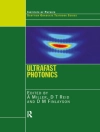The Encyclopedia of Nanotechnology provides a comprehensive and multi-disciplinary reference to the many fields relevant to the general field of nanotechnology. It aims to be a comprehensive and genuinely international reference work and will be aimed at graduate students, researchers, and practitioners.The Encyclopedia of Nanotechnology introduces a large number of terms, devices and processes which are related to the multi-disciplinary field of Nanotechnology. For each entry in this 4 volume set a 4-10 page description is provided by an expert in the field. Contributions are made by experts from the US, Europe and Asia, making this a comprehensive and truly international Reference Work. The authors are typically from academia, however one quarter of all entries were written by persons from industry.Topics covered in the Reference Work include:- Nano- Microfabrication Processes and Materials for Fabrication – Nanoscale Measurement Techniques – Nanostructures – Nanomaterials – Nanomechanics – Molecular Modeling and Its Role in Advancing Nanotechnology – MEMS/NEMS – Microfluidics and Nanofluidics – Biomedical Engineering and Biodevices – Bio/Nanotechnology and Nanomedicine – Bio/Nanotechnology for cellular engineering – Drug Delivery – Technology and Applications – Assembly- Organic Electronics – Nano-optical Devices – Micro/nano Integration – Materials, Coatings and Surface Treatments for Nanotribology – Micro/Nano Reliability – thermal, mechanical etc. – Biomimetics
Table of Content
Nano- Microfabrication Processes and Materials for Fabrication.- Nanoscale Measurement Techniques.- Nanostructures.- Nanomaterials.- Nanomechanics.- Molecular Modeling and Its Role in Advancing Nanotechnology.- MEMS/NEMS.- Microfluidics and Nanofluidics.- Biomedical Engineering and Biodevices.- Bio/Nanotechnology and Nanomedicine.- Bio/Nanotechnology for cellular engineering.- Drug Delivery – Technology and Applications.- Assembly.- Organic Electronics.- Nano-optical Devices.- Micro/nano Integration.- Materials, Coatings and Surface Treatments for Nanotribology.- Micro/Nano Reliability – thermal, mechanical etc.- Biomimetics.
About the author
Dr. Bharat Bhushan received an M.S. in mechanical engineering from the Massachusetts Institute of Technology in 1971, an M.S. in mechanics and a Ph.D. in mechanical engineering from the University of Colorado at Boulder in 1973 and 1976, respectively, an MBA from Rensselaer Polytechnic Institute at Troy, NY in 1980, Doctor Technicae from the University of Trondheim at Trondheim, Norway in 1990, a Doctor of Technical Sciences from the Warsaw University of Technology at Warsaw, Poland in 1996, and Doctor Honouris Causa from the National Academy of Sciences at Gomel, Belarus in 2000. He is a registered professional engineer. He is presently an Ohio Eminent Scholar and The Howard D. Winbigler Professor in the College of Engineering, and the Director of the Nanoprobe Laboratory for Bio- & Nanotechnology and Biomimetics (NLB2) at the Ohio State University, Columbus, Ohio. His research interests include fundamental studies with a focus on scanning probe techniques in the interdisciplinary areas of bio/nanotribology, bio/nanomechanics and bio/nanomaterials characterization, and applications to bio/nanotechnology and biomimetics. He is an internationally recognized expert of bio/nanotribology and bio/nanomechanics using scanning probe microscopy, and is one of the most prolific authors. He is considered by some a pioneer of the tribology and mechanics of magnetic storage devices. He has authored 6 scientific books, more than 90 handbook chapters, more than 700 scientific papers (h factor – 45+; ISI Highly Cited in Materials Science, since 2007), and more than 60 technical reports, edited more than 45 books, and holds 17 U.S. and foreign patents. He is co-editor of Springer Nano Science and Technology Series and co-editor of Microsystem Technologies. He has given more than 400 invited presentations on six continents and more than 140 keynote/plenary addresses at major international conferences.












